You’re about to dive into the vibrant world of Betta fish. Known for their stunning colors and unique tail types, each Betta boasts distinct traits you’ll love to discover.
From Veil Tail to Half Moon, and Koi to Dragon Scale, understanding these varied beauties can enrich your aquarium experience. Aggression levels vary, adding another layer of intrigue.
Ready to uncover the exciting diversity of Betta fish? Let’s get started.
Exploring Betta Fish Tail Types
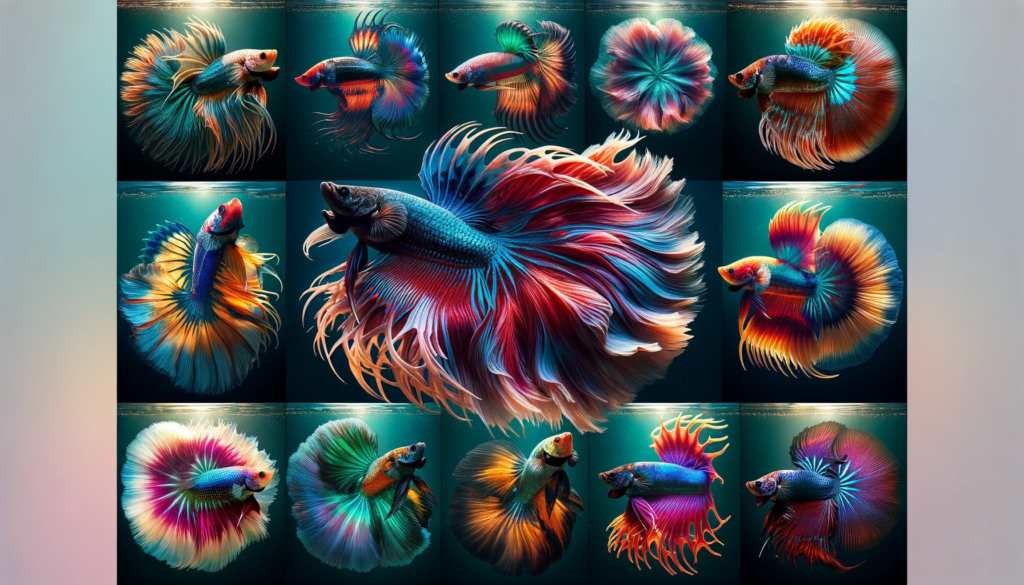
Veiltail Betta: This type is renowned for its striking, long, flowing tail which elegantly drapes like a delicate veil, often extending beyond the length of its body. The tail’s edges are rounded, setting it apart from more angular tail types.
Crowntail: The Crowntail Betta stands out with its dramatic tail and fin rays that extend well beyond the fin webbing, creating a spiky, crown-like silhouette. This distinct extension of the rays makes it significantly different from other Bettas with more uniform fin shapes.
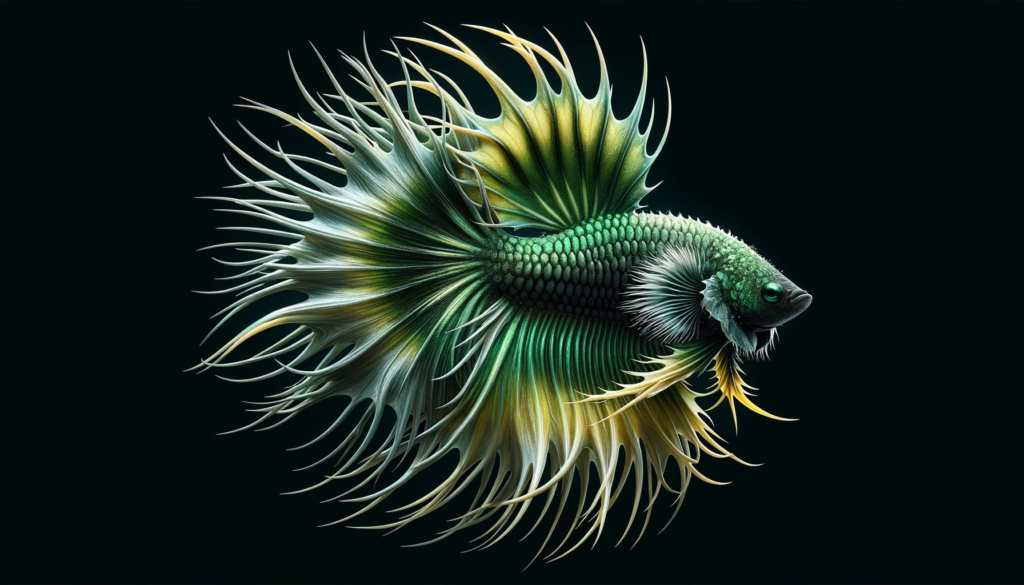
Combtail: Combining elements of the Veiltail and Crowntail, the Combtail features slightly extended rays that are less pronounced than the Crowntail’s, giving it a softer, comb-like appearance. This intermediate form makes it unique among Bettas, bridging the gap between the extreme spikes of Crowntails and the flowing drapery of Veiltails.

Double Tail: This Betta type is characterized by its two distinct tail lobes, split down the middle, creating a mirror-like symmetry. This bifurcation of the tail is unusual among Bettas, offering a balanced and striking aesthetic.
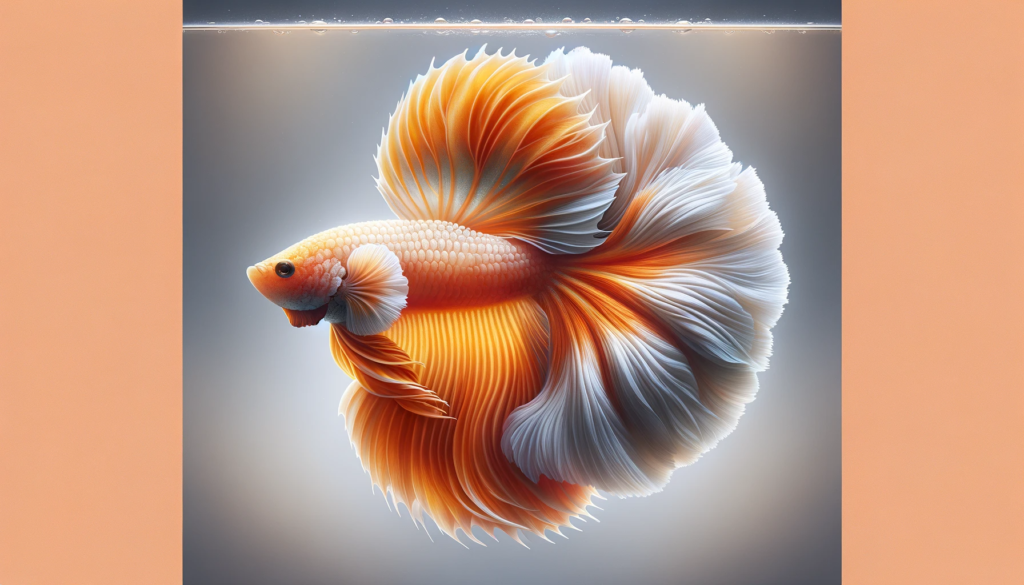
Spade Tail: Aptly named for its resemblance to a playing card spade, the Spade Tail Betta features a tail that tapers to a sharp point. This pointed, spade-like shape sets it apart from the more rounded or split tails of other types.

Halfmoon: The Halfmoon Betta boasts a large, semi-circular tail that often spreads 180 degrees, resembling a half moon. This full, dramatic spread makes it one of the most visually striking Betta types.
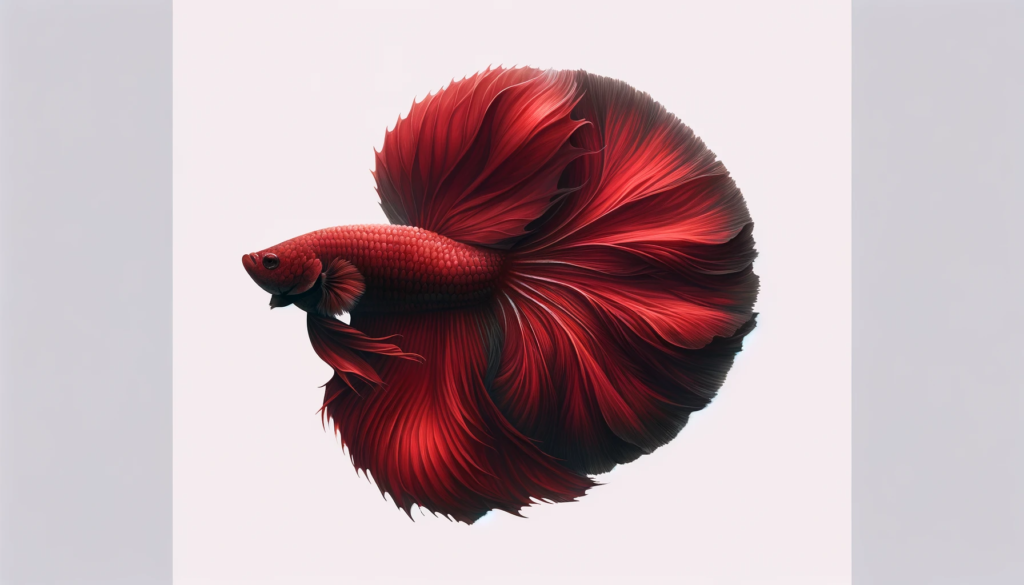
Over-Half Moon: Going beyond the Halfmoon, the Over-Half Moon Betta’s tail spreads wider than 180 degrees. This excessive spread, often approaching a full circle, creates a lush, almost theatrical display.
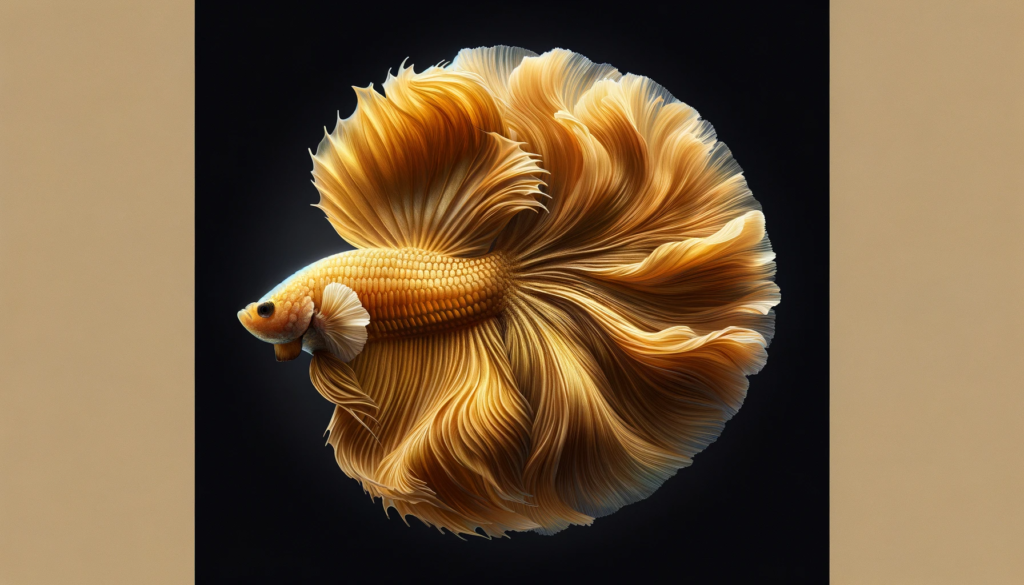
Delta Tail: Named after the Greek letter “Delta,” this type has a tail in the shape of a triangle with straight edges. The Delta Tail’s geometric shape contrasts sharply with the more rounded or spiked tails of other Bettas.
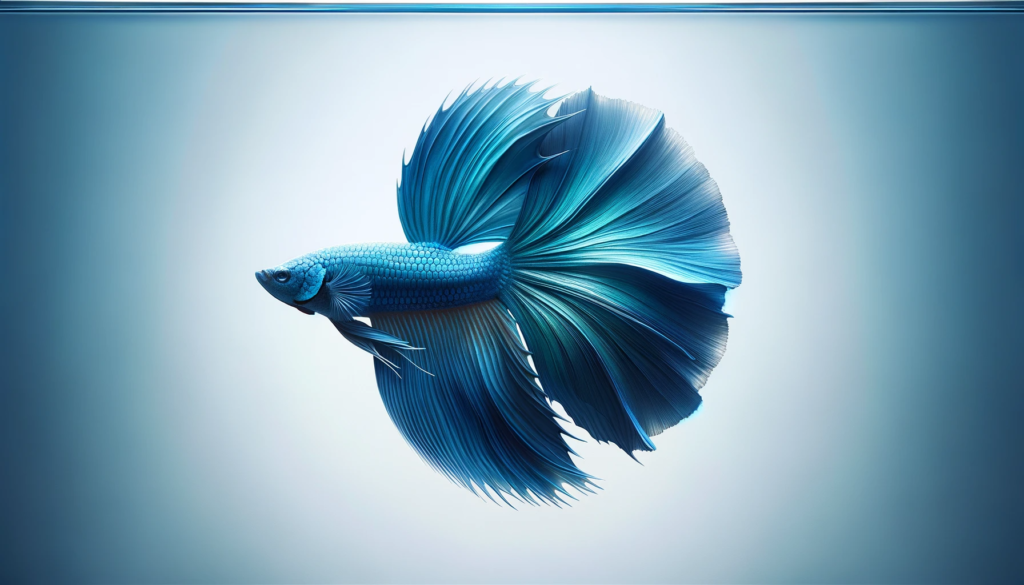
Others:
- Super Delta: A step up from the Delta, the Super Delta Betta’s tail almost reaches the Halfmoon’s spread but doesn’t quite make the 180-degree mark. This expansive but not quite full spread sets it apart.
- Half Sun: A hybrid, the Half Sun combines features of the Halfmoon and Crowntail, with the large spread of a Halfmoon and the ray extensions of a Crowntail, creating a sunburst-like appearance.
- Rosetail: The Rosetail is an exaggerated form of the Halfmoon, featuring excessive branching of the rays that create a layered, rose-like effect. This lush, floral appearance is distinct and more ornate than other types.
- Feather Tail: Similar to the Rosetail but even more exaggerated, the Feather Tail Betta’s tail rays are so branched and layered that they resemble delicate feathers. This intricate, feather-like structure is unique and highly decorative.
- Plakat/Shortfin: Contrasting with the long-finned varieties, the Plakat Betta, or Shortfin, has short, stout fins that are more functional and less prone to tearing. This practical, streamlined appearance sets it apart from the more ornamental types.
- Dumbo Ear/Elephant Ear: This Betta type is defined not by its tail but its pectoral fins, which are unusually large and resemble elephant ears. These “Dumbo” fins create a distinctive silhouette, differentiating it significantly from other Bettas with standard-sized fins.
Understanding Betta Fish Pattern Types

Diving into the realm of betta fish patterns, you’ll uncover an extraordinary array of designs that add to these creatures’ allure. Understanding betta fish pattern types is key to appreciating the diversity within betta breeds.
There are many types of bettas, and they each exhibit unique patterns. The Dragon Scale betta, for instance, is known for its thick, metallic scales that appear to overlap, giving it a dragon-like appearance. The Veiltail betta, on the other hand, is recognized by its long, flowing fins that often display a mix of vibrant colors.
Solid Bettas are characterized by a single, uninterrupted color that covers their entire body and fins. This simplicity in coloration highlights the natural elegance of the Betta fish. Popular colors include vibrant red, royal blue, and striking green, each presenting a rich, deep hue that’s consistent across the body.
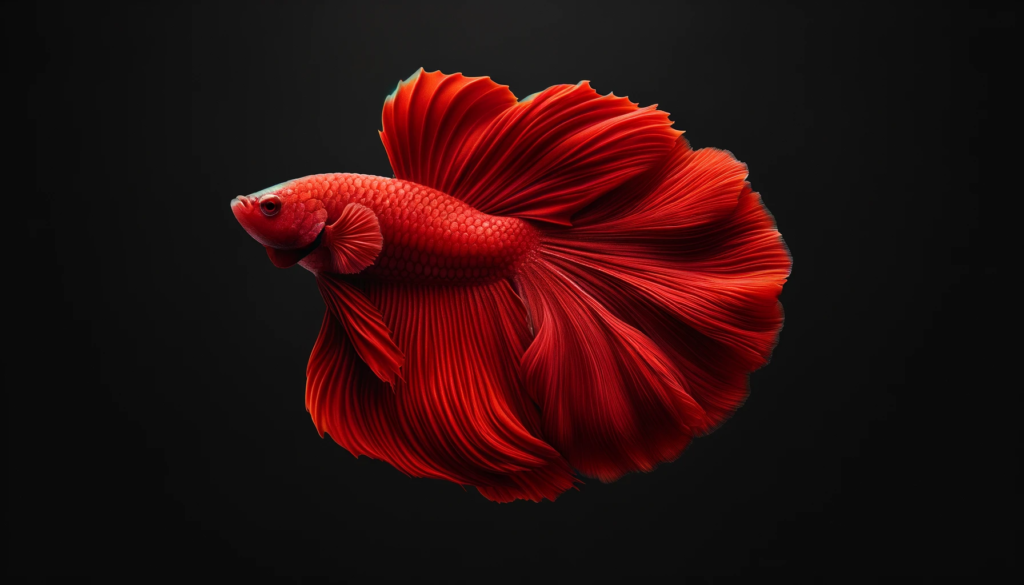
Marble Bettas are like living art, with their bodies and fins displaying a mix of colors in an irregular, mottled pattern. The most fascinating aspect of Marble Bettas is their ability to change colors over time, known as the “marble gene,” leading to a dynamic and ever-evolving appearance.
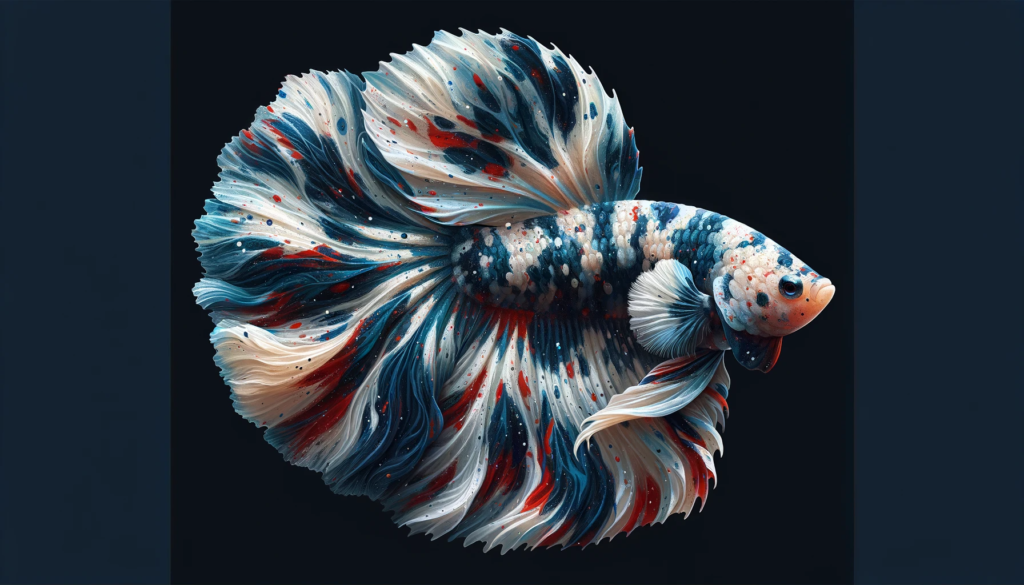
Butterfly Bettas exhibit a striking two-tone coloration. Typically, their body is one solid color, while their fins start with the same or a harmonious color at the base, gradually transitioning to a transparent or white edge. This pattern creates a visually stunning effect, reminiscent of the delicate wings of a butterfly.
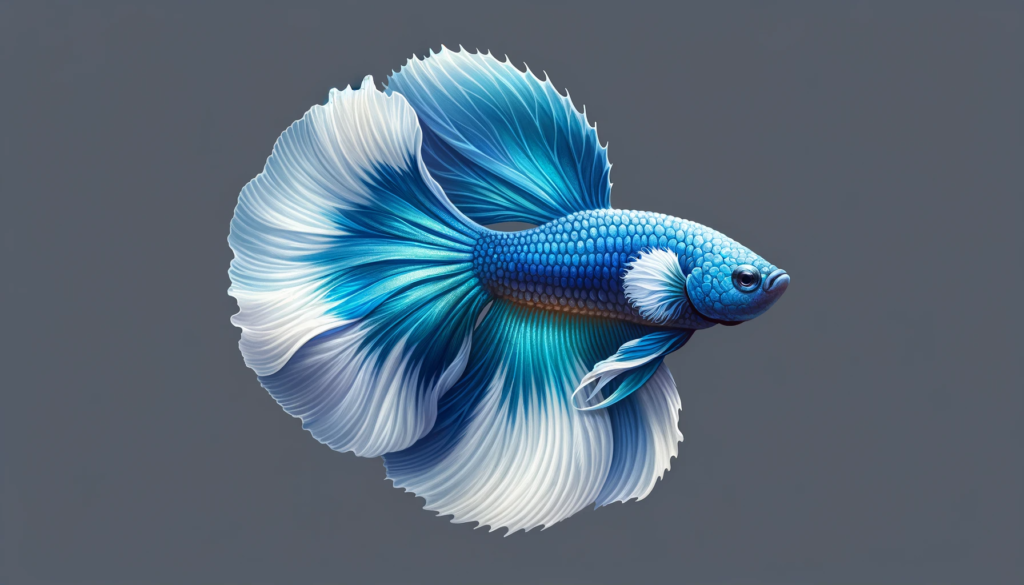
Dragon Scale Bettas stand out with their armor-like scales. These scales are typically metallic and more pronounced than those of other Bettas, covering the body in a way that resembles the mythical dragon. The contrast between the thick scales and the rest of the body adds to their majestic and powerful appearance.
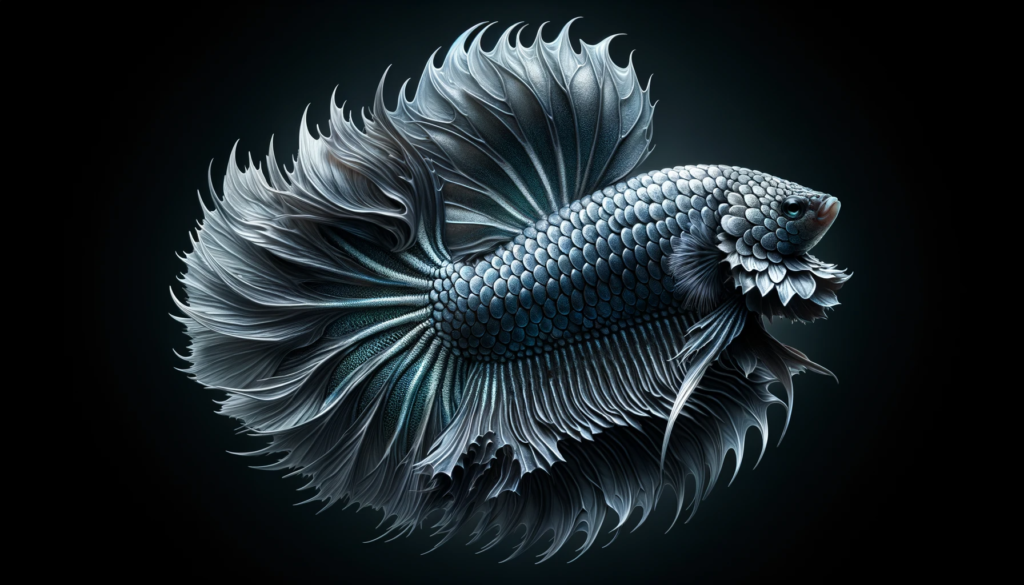
Piebald Bettas are distinguished by their unique facial coloring. Their face is typically white or flesh-toned, creating a stark contrast with the rest of their body, which can be any color. This distinctive facial coloration makes the Piebald pattern easily recognizable.
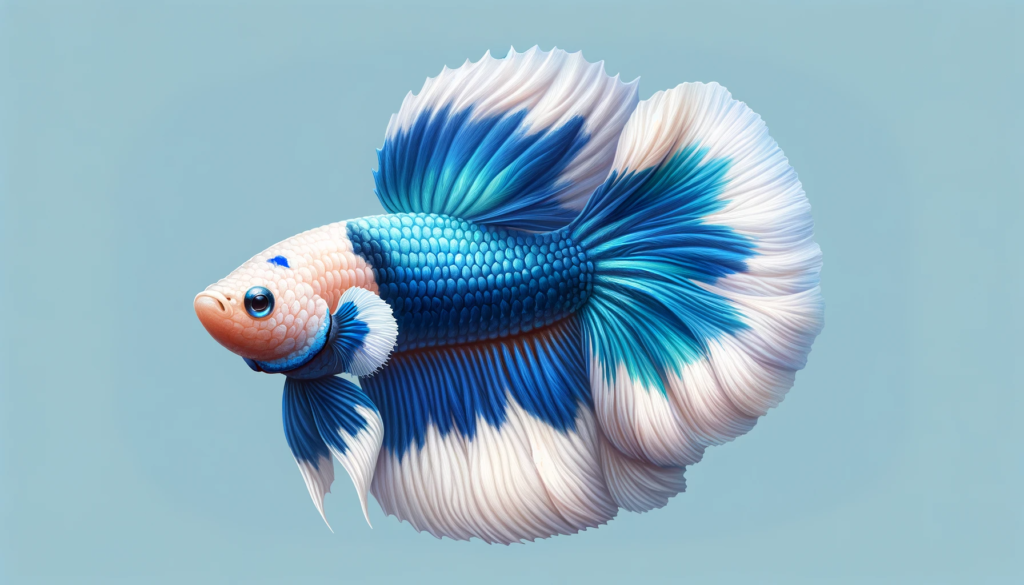
Koi Betta: Named after the Koi carp, Koi Bettas have a charming and random pattern of white, black, and red/orange splotches. This pattern is distributed across their body in a way that mimics the appearance of Koi fish found in traditional Japanese ponds, making them a favorite for their resemblance to these iconic fish.
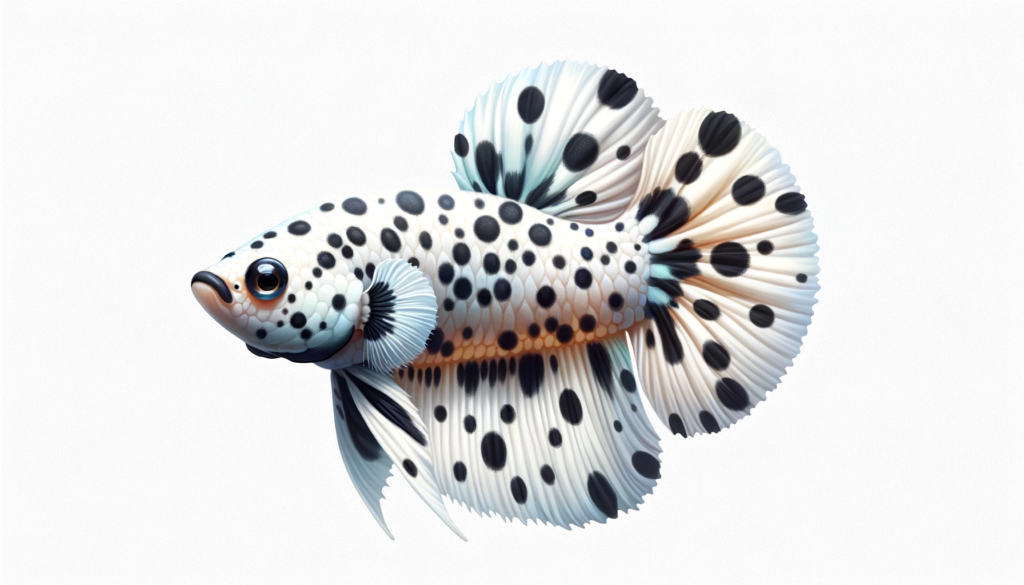
Dalmatian Betta: Inspired by the Dalmatian dog breed, these Bettas have a primary light base color, often white, with darker spots sprinkled across their body. The spots can vary in size and distribution, giving each Dalmatian Betta a unique and playful look.
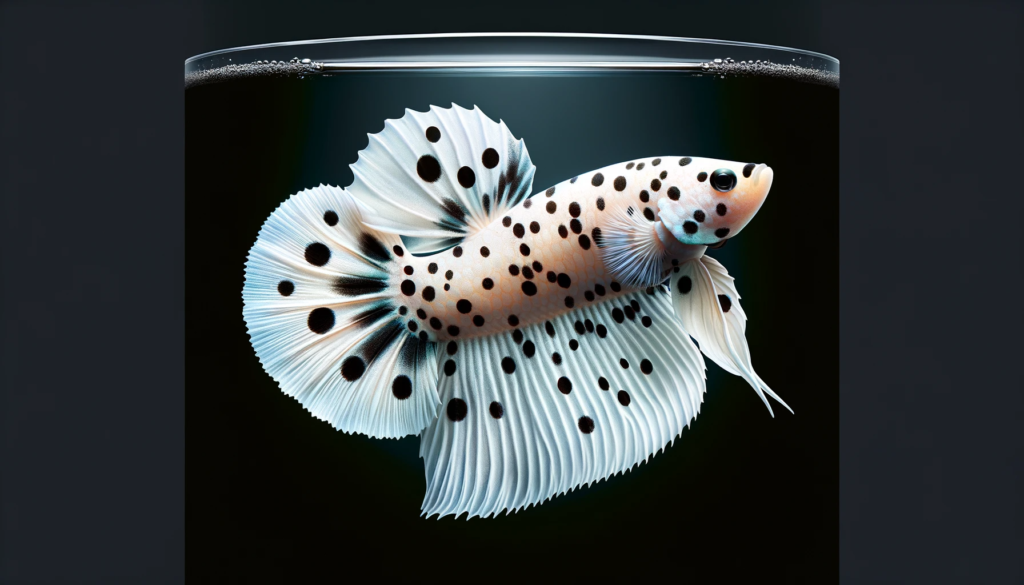
Mask Betta: In the Mask pattern, the Betta’s facial color matches the body, creating an effect as if the fish is wearing a mask. This uniform coloration across the face and body provides a sleek and cohesive appearance, often highlighting the Betta’s expressive eyes and facial features.
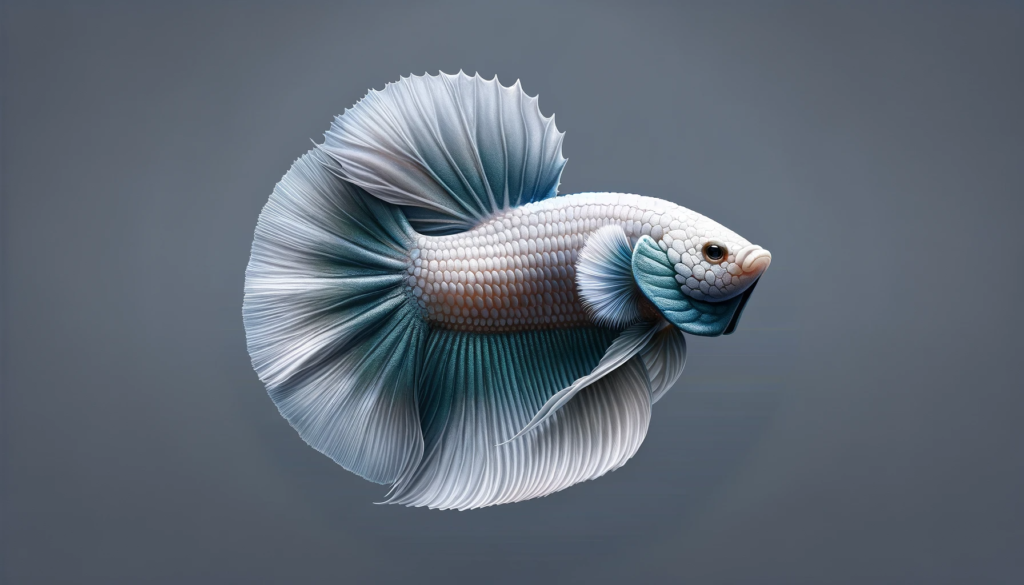
Grizzle Betta: The Grizzle pattern is characterized by a base color with irregular speckles or smears of a contrasting color. This creates a somewhat rugged or ‘grizzled’ look, adding a sense of depth and texture to the Betta’s appearance.
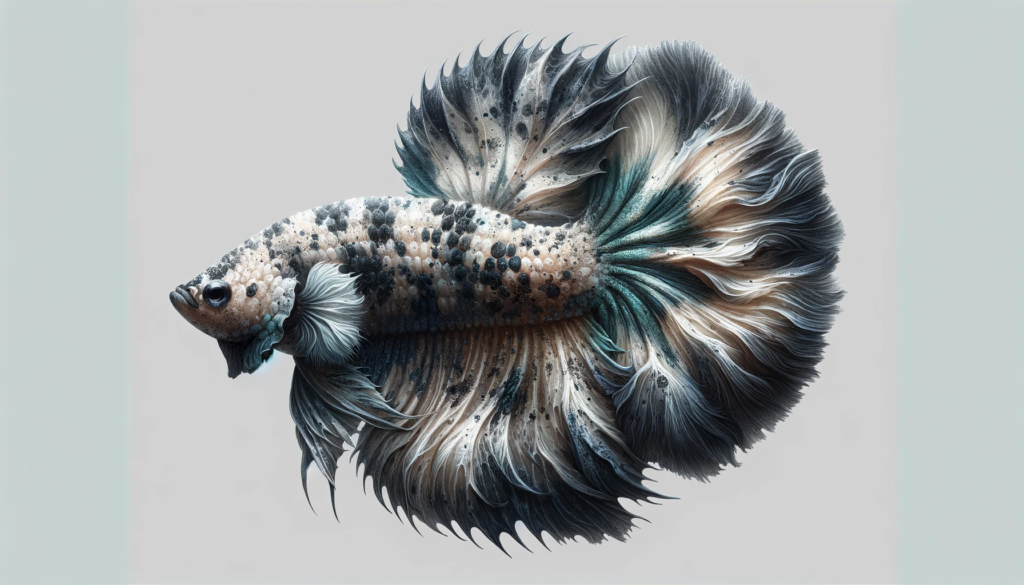
Bicolor Bettas are marked by their distinct two-color scheme. Unlike the gradual blend of the Butterfly pattern, the Bicolor pattern features a clear separation between the two colors. One color typically covers the body, while a different color adorns the fins, creating a bold and striking contrast.
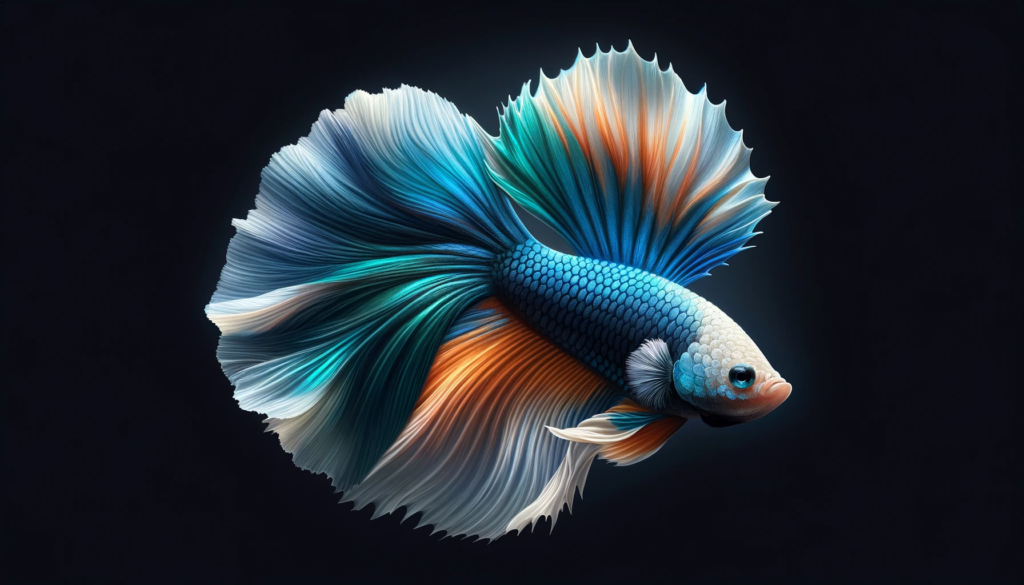
Aggression Levels in Different Betta Types
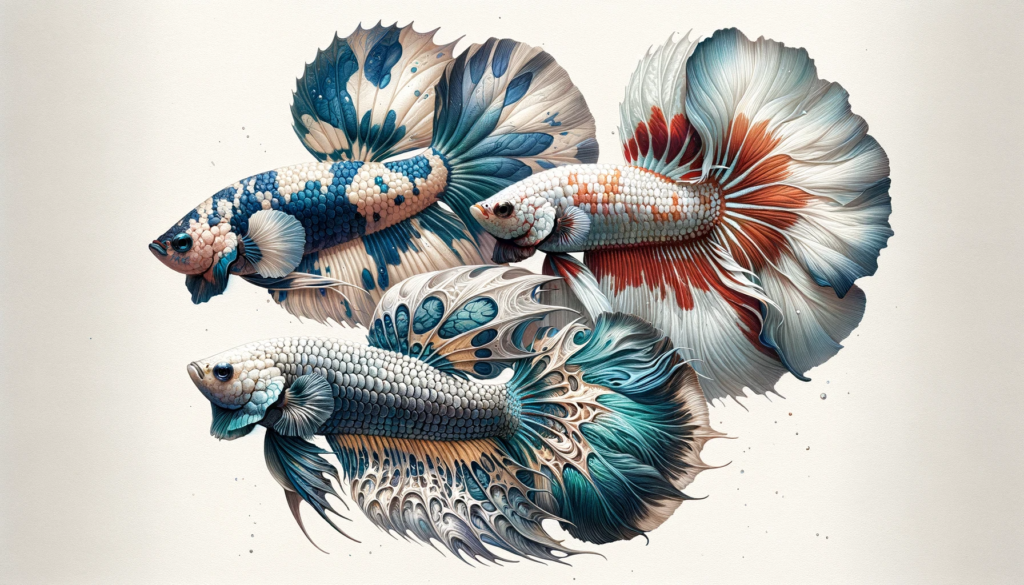
Understanding the aggression levels of different betta types is crucial for your journey as a betta fish owner, as it significantly influences their compatibility with other fish and their overall care needs. The most aggressive betta fish is the Plakat Betta. This fish type, known for its shorter tail and minimally ornate fins, tends to display extremely aggressive behavior, especially towards fish of the same species.
Contrastingly, the least aggressive betta fish is often the Veil Tail. With their long, flowing fins, these bettas typically exhibit less aggressive behavior, making them more suitable for community tanks. It’s important to note that individual personalities can vary, so their aggression levels aren’t guaranteed.
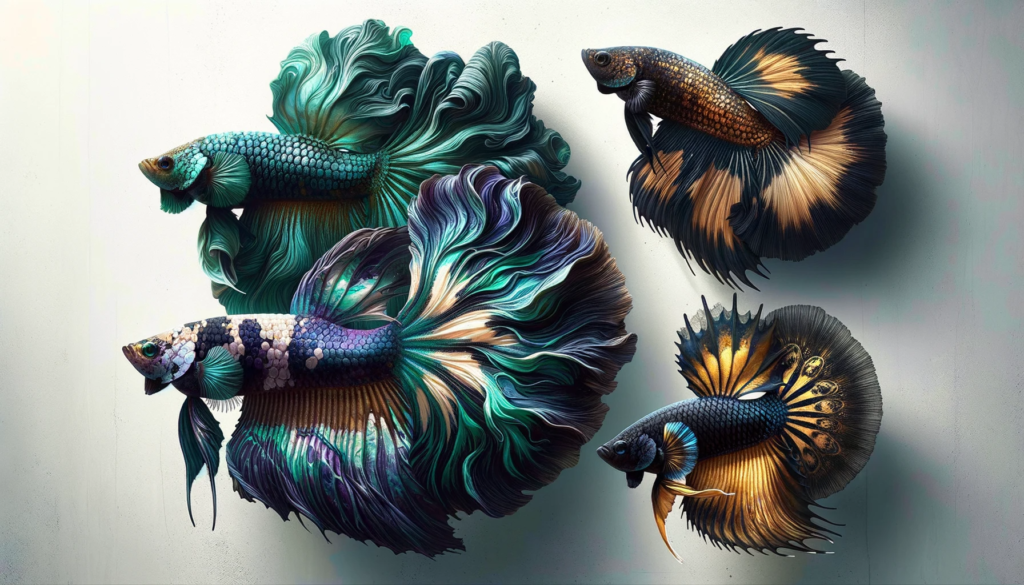
Other types, such as the dragon betta fish, crowntail male betta, half moon male betta, and halfmoon double tail male betta, show varying degrees of aggression. For example, the halfmoon double tail male betta is a double tail fighter fish, known for its aggressive nature. On the other hand, crowntail male bettas and dragon bettas are usually moderately aggressive.
Discovering Rare Betta Fish Colors
While you might be familiar with the common, vibrant shades of betta fish, it’s the rare colors that can truly capture your attention and make your aquarium stand out. Betta fish come in an array of unique and rare colors, each with its own distinct allure.
Among these rare colors, you’ll find the alien betta fish, a variant boasting an otherworldly blend of colors. There’s also the black and white betta fish, a striking contrast that’s anything but ordinary. Female betta fish types can also exhibit these rare colors, adding a dash of diversity to your collection.
Some of the other uncommon betta fish types include:
- The dragonscale betta with its metallic scales,
- The flamboyant rose tail betta,
- The elusive black samurai betta,
- The betta hendra, a species known for its distinctive coloration,
- The fiery red dragon betta,
- The rare albino betta with its lack of pigmentation,
- Lastly, the pristine all white betta fish.
These seldom-seen hues can transform your aquarium into a vibrant underwater spectacle. Owning these rare betta fish types can be a truly rewarding experience, making your hobby more enjoyable and exciting.
What type of betta is most aggressive?
If you’re considering adding a betta to your aquarium, it’s important to note that the Plakat betta is known to be the most aggressive type. Unlike other betta types, such as crown tail bettas or the half moon siamese fighting fish, Plakats have an inherent territorial nature that can lead to aggressive behavior.
Among the diverse betta types, full moon bettas and over halfmoon bettas, while visually striking, are typically less aggressive than Plakats. Even the double tail betta fish female, known for her flamboyant fins, is generally more peaceful.
Interestingly, the dragon betta, with its metallic scales, and the dragon scale male betta, a variant with a unique scale pattern, also fall into the less aggressive category. Similarly, the twin tail halfmoon betta, renowned for its stunning tail, is less prone to aggression than the Plakat.
- Dragon Betta Fish: Known for their thick, iridescent scales, Dragon Bettas are not just striking in appearance but also in temperament.
- Dragon Scale Male Betta: A variant of the Dragon Betta, the males of this type are particularly territorial.
- Mean Betta Fish: As the name suggests, this type is notorious for its aggressive behavior.
- Aggressive Betta Fish: Another type that lives up to its name, these Bettas are known to be feisty and can show aggression towards other fish and even their own reflection.
- Black Samurai Betta: With a warrior-like name, it’s no surprise that the Black Samurai Betta is among the more combative types.
- Red Dragon Betta: Combining the fierceness of the dragon with a fiery red color, the Red Dragon Betta is both beautiful and belligerent.
- Rare Dragon Betta Fish: A rarer variant, but no less aggressive, this type can be a handful for inexperienced aquarists.
However, it’s crucial to remember that behavior can also be influenced by individual personality and environmental factors. Even the most aggressive Plakat can be conditioned for peaceful cohabitation under the right circumstances. As a betta fish owner, understanding these nuances can help you create a harmonious aquarium environment.
What type of betta is least aggressive?
On the other end of the aggression spectrum, you’ll find the Veil Tail betta, known for its tranquil demeanor and preference for gentle water currents. These bettas, often adorned with a fantail or feathertail, stand out for their calmness among other dragon betta fish breeds.
They come in multiple colors, but the black and red betta fish is a particular fan favorite. Yet, it’s not just their color that makes them appealing. Their non-aggressive nature means they’re less likely to flare up or display aggressive behavior, unlike their counterparts such as the halfmoon fish or the koi half moon betta.
Veil Tail Betta:
- Least aggressive
- Prefers gentle currents
- Includes the rare dragon betta fish variant
- Female Betta Fish Types: Female Bettas, in general, tend to be less aggressive than their male counterparts and can sometimes be housed together with caution.
- Halfmoon Plakat Betta: While they have the stunning appearance of the Halfmoon Betta, the Plakat variant is often less territorial.
- Orchid Betta: With a gentle nature that matches its delicate appearance, the Orchid Betta is among the less aggressive types.
- Over Halfmoon Betta: This type, with its beautifully extended fins, is not only a sight to behold but also tends to have a milder temperament.
- Betta Hendra: A lesser-known type, the Betta Hendra is often praised by aquarists for its more placid nature.
These fish aren’t to be confused with the cambodian betta or cambodia betta, which can be more aggressive. Interestingly, the orchid betta, a type of Veil Tail, is also known for its peacefulness.
While bettas are generally more aggressive than other fish, the Veil Tail betta is your best bet if you’re looking for a peaceful betta.
Which betta fishes can live together
You might wonder which types of betta fish can coexist peacefully in the same tank. When it comes to mixing betta fish, it’s crucial to understand that their temperament is species-dependent.
For instance, Betta Imbellis, often seen as green betta fish for sale, is a less aggressive species that can handle cohabitation with other bettas of the same species. On the other hand, the white opal betta fish, known for its striking color, is typically more aggressive and best housed alone.
Butterfly fighter fish, despite their name, can sometimes live peacefully with other non-aggressive bettas, especially if the tank is spacious with plenty of hiding spots.
However, always monitor the fish’s behavior when introducing new inhabitants, as individual temperaments can vary. Here’s a quick reference table for you:
| Betta Type | Can Live Together? |
|---|---|
| Green Betta Fish (Betta Imbellis) | Yes |
| White Opal Betta Fish | No |
| Butterfly Fighter Fish | Possibly |

